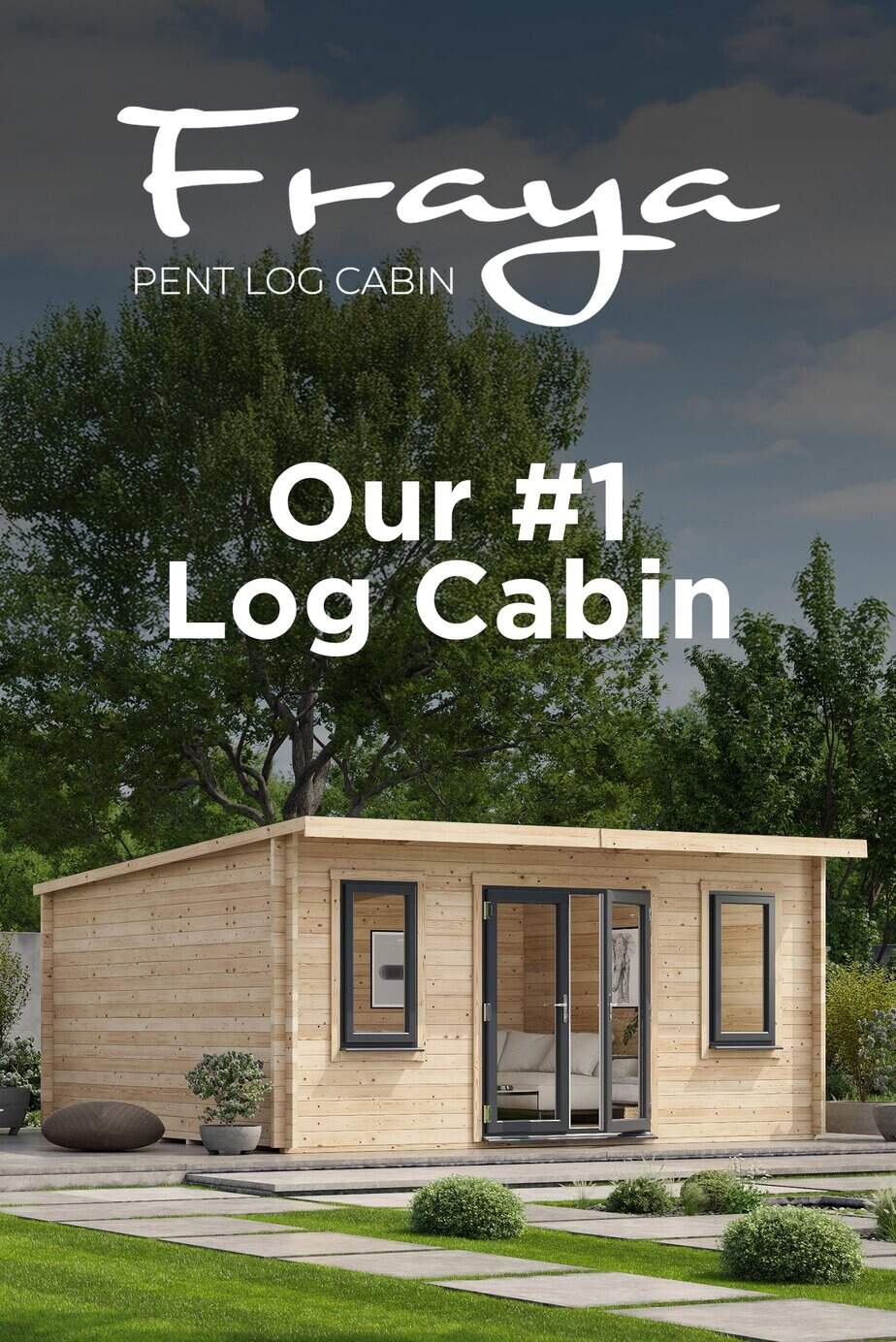Looking to heat your summer house without electricity? From solar hacks to natural heat sources, here are 7 smart and eco-friendly ways to do just that.
Use the Sun to Your Advantage
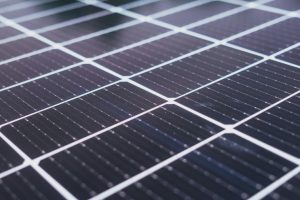
Install solar panels on the roof and you can power your garden room without relying on the mains.
Summerhouses are often seen as a warmer-weather retreat, but they’re versatile for year-round use. And while the sun’s out, why not make the most of it? This is the perfect time to take advantage of peak sunlight.
Angle your panels to face south, with no trees or nearby buildings blocking them for best results.
Not only are solar panels sustainable, but they also allow you to do your part in helping to save the planet. It’s a win-win solution if you ask us!
Refer to our guide, ‘How to Install Solar Panels on a Shed,’ for step-by-step instructions.
Welcome More Sunlight In
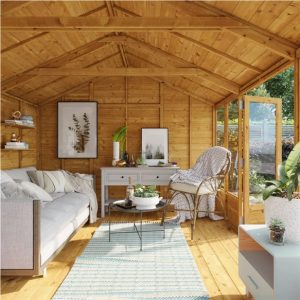
Days are shorter during the winter months, but the sun still provides light, and sometimes, a bit of warmth during midday. All you need to do is draw the curtains, pull back the curtains, and open the windows to let it in. This works even better in summer, helping your summerhouse feel brighter and more open.
Tip: Position your summerhouse (if you must) in a spot that gets plenty of daylight, ideally facing south, to maximise the sun’s benefits.
Build a Barrel Stove
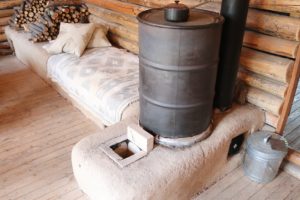
(Image Credit: Wikimedia Commons)
Consider this if you’re into DIY. It can save you a fair bit of money, but you’ll need to do it right to ensure your effort isn’t wasted. An old metal barrel will suffice; it holds heat well, is fairly cheap, and easy to source.
Important: Fit a carbon monoxide detector, allow for ventilation, and check local regulations before installing any wood-burning stove.
To turn the barrel into a stove, cut a door in the side for adding wood and an opening at the top for a stovepipe. This requires a flue for venting fumes out of the building. Place it away from the walls and on a fireproof surface.
Install Solar Water Heating Pipes
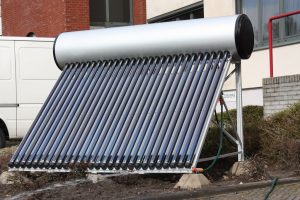
This is another clever way to make the most of the sun. Solar water heating systems use black pipes to absorb sunlight and warm up a fluid inside. That heat is then released into the space, raising the temperature inside, a bonus on cooler days. And if things start to feel a bit too warm, crack a window to let some fresh air through.
Mount the pipes on a sun-facing wall or roof where they’ll take in the most direct sunlight throughout the day.
Insulate Your Summerhouse
Like most garden buildings, summerhouses can be cold without insulation on their walls, floors, and roofs. There are a few ways to go about it.
Foil-backed insulation boards are easy to cut and install, perfect if you’re going for the DIY route. Sheep’s wool also offers good thermal performance and is great at managing moisture. You can also insulate under the floorboards using rigid foam to keep the chill out underfoot.
Insulate the roof and floor first, as that’s where most heat is lost. When adding wall panels, leave a small air gap behind for better airflow.
Use Compost for Heat
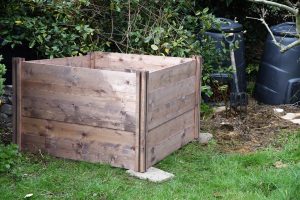
Composting is a great way to cut down on waste and lower your carbon footprint. But it can also give off heat as it breaks down, and you can use that to warm your summerhouse. As compost decomposes, it releases heat, which helps warm the space and lowers the need for heating in winter. In summer, you can redirect or vent that heat so it doesn’t build up inside.
Note: You’re not trying to heat the whole summerhouse with it. Place the heap or bin (enclosed to keep smells and pests away) outside, next to a sunlit wall. If there’s a nearby vent or opening, you might get some warmth drifting in on colder days.
And there you have it! With these simple but effective ways to heat your summer house without electricity, you can stay warm and cosy without racking up high energy bills.
Looking for a new model? Shop our insulated summer houses, and save on insulation costs and effort.
Read this next: Innovative Uses for Summerhouses During the Harsh Winter Months


